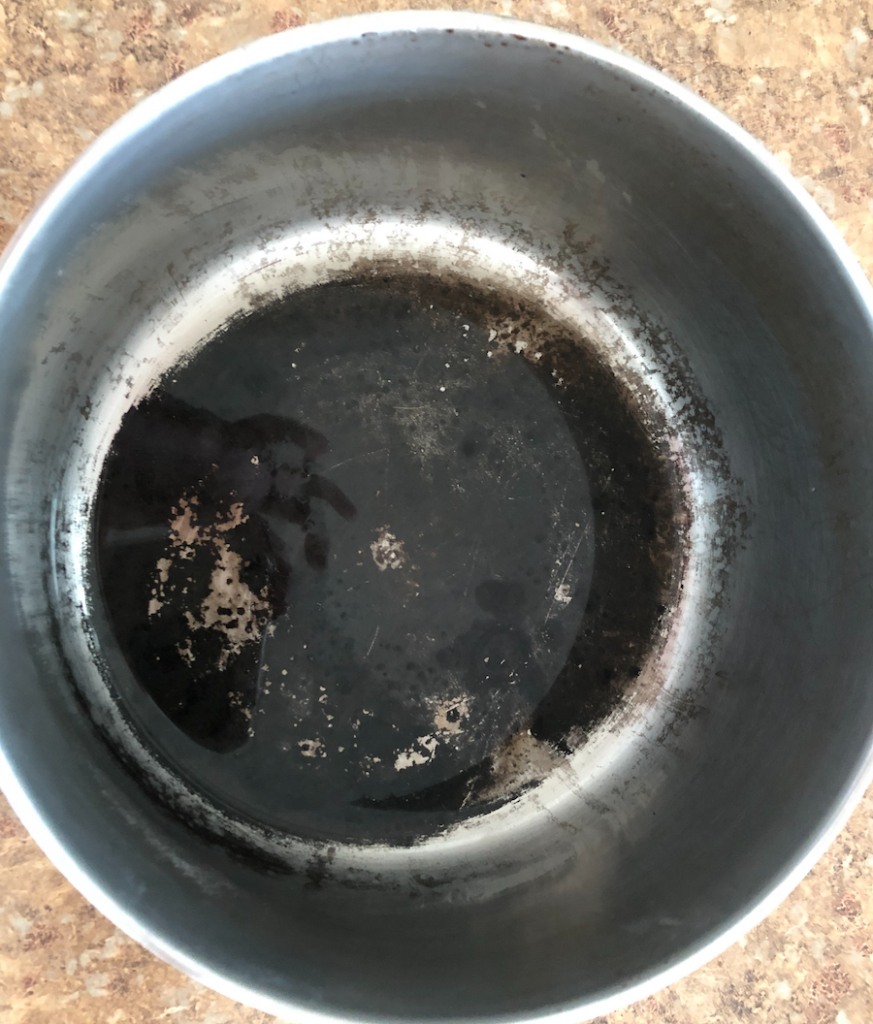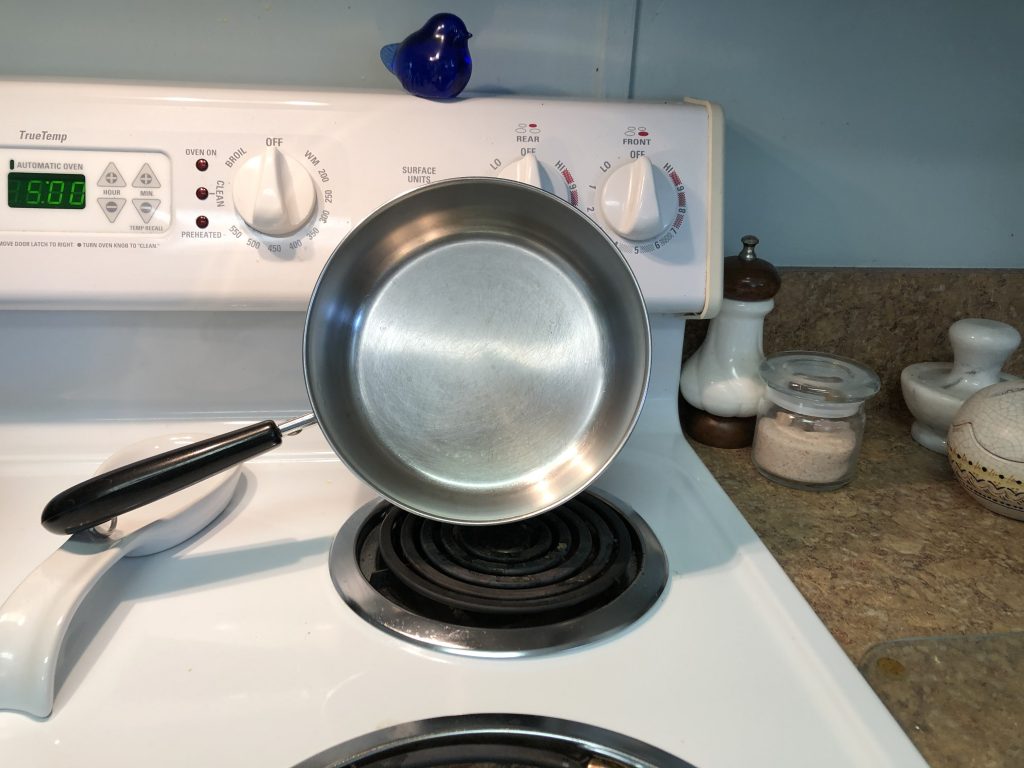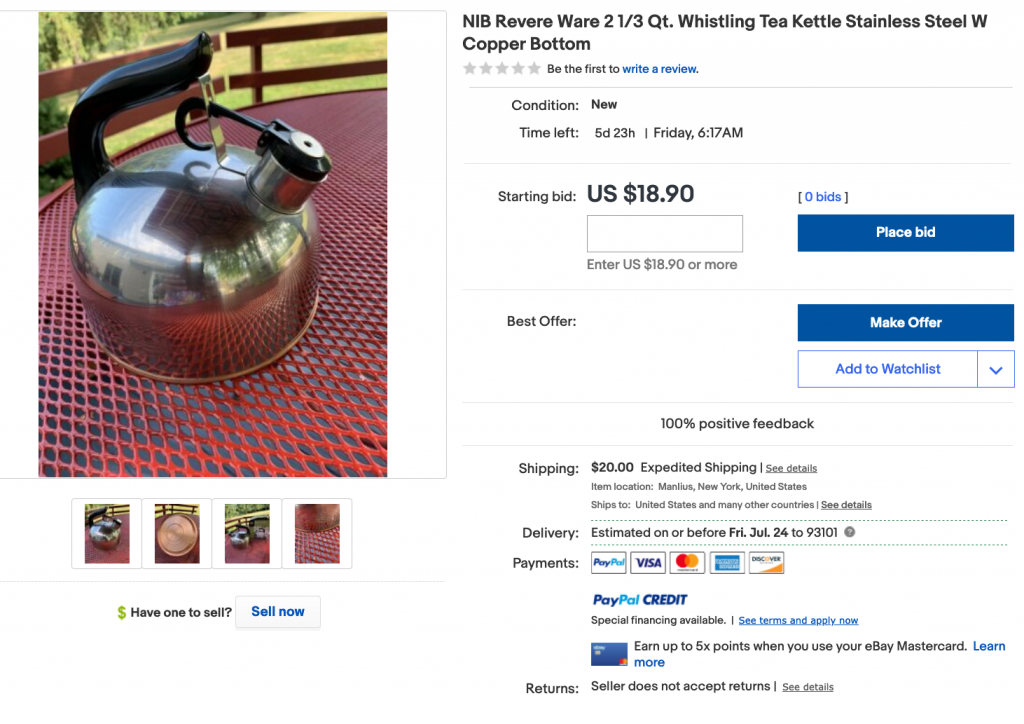Reader Nedra contacted us with a pot that had boiled dry with water and left black stuff all over the bottom.
Hello, I have a 2 quart pan that I left on the stove too long. The water that was in the pan completely
evaporated and left the bottom of the pan black. What do you recommend to clean with? I am so
upset….one of my favorite go-to pans.
Sometimes heavy hard water deposits, which you will always have some of when you boil a pot dry, can get charred black like this. Regardless of what it is, the best approach I’ve found is heating up some vinegar and powdered dishwasher detergent. I have no idea why powdered is better than liquid, but that is what I’ve always used and it works.
We first tried this when my wife was making simple syrup (sugar and water) and boiled the mixture dry. That smoked quite a bit and brought the fire department, as we had smoke detectors through our alarm company. The firefighters were pleasant and somewhat amused.
Given the rock hard layer it left behind, we thought the pan was a goner. But lo and behold, repeated heating and scraping with a flat metal spatula got most of the stuff off and a green Scotch Brite pad took care of what remained. But that’s not the only method. Here is what Nedra did:
Thank you for getting back to me so soon. I did put baking soda and apple cider vinegar, that’s all I had on hand. I left it over night and it seems to be lifting a little bit. I’ll buy straight vinegar today.
And then:
First I coated the pan with oven cleaner and left it on overnight, nothing. Then I added baking soda and white vinegar and let that sit for a few hours. Did it again but this time heated the pan. I used a steel wool pad with soap and elbow grease and low and behold I have my shiny pan back I’ve attached before and after photos for you.
Now, a couple of words of warning here. Oven cleaner can cause pits in your stainless steel so is not recommended. Steel wool can leave little bits of itself behind which will promote rust. It is best to stick with a Scotch Brite pad for scouring and, if you want a bit more of a polish, use Bar Keepers Friend.
But, don’t use a Scotch Brite pad on the outside of your cookware as it will dull the finish. On the inside, this is ok as the finish gets naturally dulled by acidic foods and metal cooking utensils. Bar Keepers Friend however is good for both the inside and outside of your stainless steel cookware and is a great way to bring back some of that shine.




